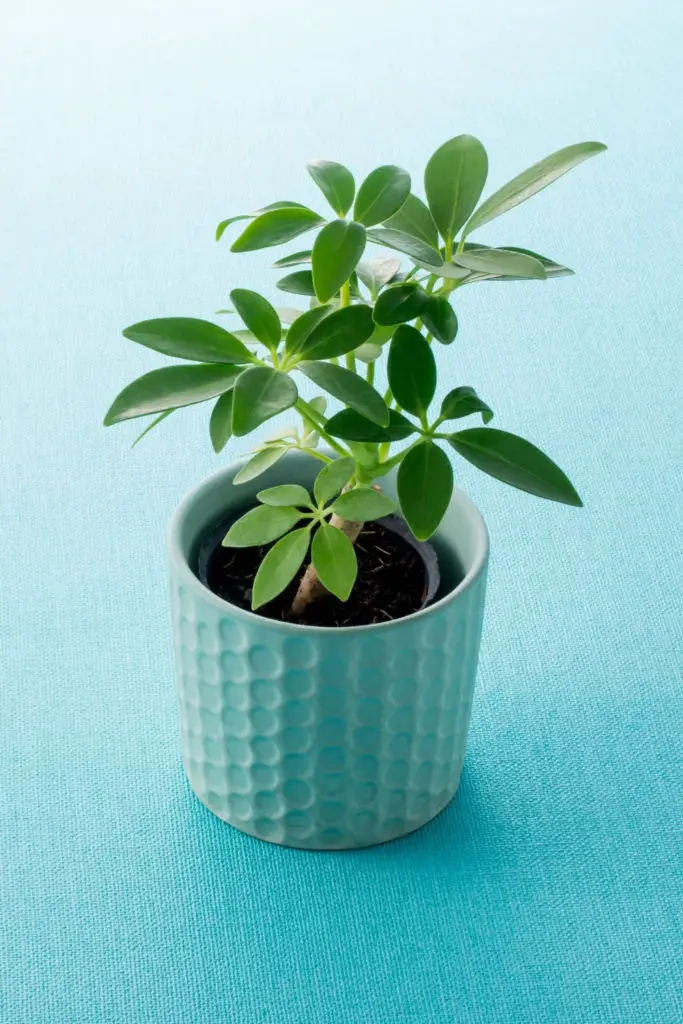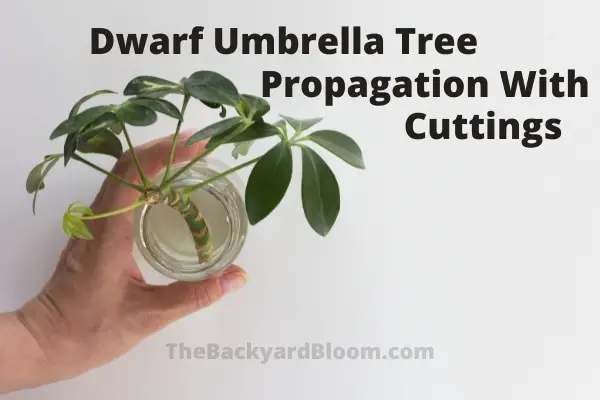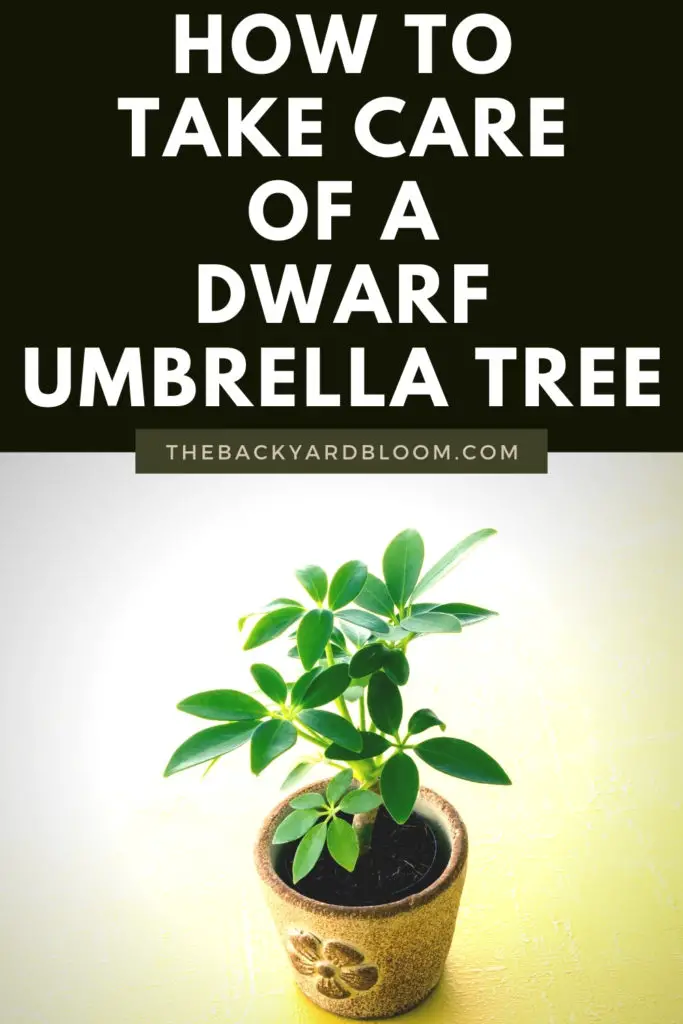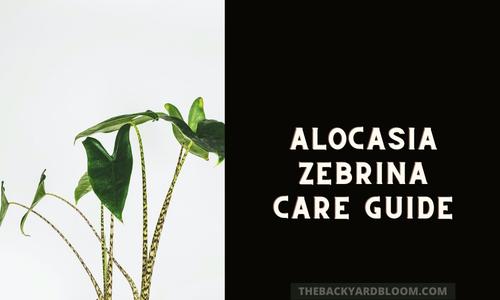Dwarf Umbrella Trees (Schefflera arboricola) are among some of the easiest houseplants to care for and grow in your home. If you have acquired one of these awesome-looking plants you might be wondering how do you take care of a Dwarf Umbrella Tree?
Dwarf Umbrella Trees are among some of the plants that I’ve always had throughout my green thumb gaining experience and it stuck through the hard times with me. These plants can take some neglect from brown thumbers and come out fine on the other side. What they don’t seem to take well is over attentiveness.
These house plants can be grown indoors and outdoors during the warmer seasons. They grow well in brightly lit areas and don’t require constant attention.
- Origins
- How To Water a Dwarf Umbrella Tree Plant
- Dwarf Umbrella Tree Light Requirements
- What Soil to Use with Dwarf Umbrella Trees
- Repotting Dwarf Umbrella Trees
- Propagation
- Toxicity
- Fertilizing
- Pruning and Maintenace
- Temperature
- Humidity
- Common Problems With Dwarf Umbrella Trees
- Frequently Asked Questions About Dwarf Umbrella Trees

Origins
Dwarf Umbrella trees or Schefflera arboricola originally are from Taiwan. They can be found along the banks of streams and in wet forests.
The variegated type of Dwarf Umbrella tree also goes by the name Gold Capella.
They are evergreen plants that can grow like a shrub, a tree, or even a climbing plant.
How To Water a Dwarf Umbrella Tree Plant
Once the top layer of soil is dry, water the plant.
You do not want to water these too often. Watering them too much and leaving them in soggy soil can cause root rot.
Make sure to use room temperature water. Ice-cold water can cause issues due to shock.
These plants are more tolerant of having dry soil than soil that is overwatered and wet all the time. But they are from tropical environments so making them go dry for too long can cause the plant to start wilting.
Dwarf Umbrella Tree Light Requirements
These plants prefer bright indirect light. But some can do fine with medium to low light conditions.
If you have a variegated Dwarf Umbrella tree then you will want to make sure it is in a brightly lit area but not in direct sunlight.
The nonvariegated Dwarf Umbrella trees can tolerate lower lighting conditions. But if you start to notice your plant growing too leggy then you should try moving it to an area with more light. Lower light will also slow down the growth of the plant.
What Soil to Use with Dwarf Umbrella Trees
As with most house plants, well-draining soil is a must with these plants. Regular potting soil with a bit of perlite (What is Perlite Used For?) added in will do fine for these plants.
Leaving a Dwarf Umbrella tree sitting in soggy soil can cause issues with the plant.
Repotting Dwarf Umbrella Trees
You will need to repot these plants about every two years.
The best option for repotting your plant is to pick out a pot that allows for drainage.
Use regular potting soil with some added perlite when your repot your plant.

Propagation
Dwarf Umbrella trees can be easily propagated by taking stem cuttings and putting them in water until they grow roots.
Once roots have grown on the stem plant the cutting in a pot with potting soil.
You can gain many cuttings when you prune your plant and make plenty of these baby Dwarf Umbrella trees.
Toxicity
Dwarf Umbrella trees are listed on the ASPCA site as toxic to both dogs and cats.
The most common symptoms of the plant being ingested are vomiting and diarrhea.
If you do have a cat or a dog that likes to chew on your Dwarf Umbrella tree, Bitter Apple helps stop them from chewing on them. I use it on mine often because my one cat is very fond of my Scheffleras in the house.
Fertilizing
Dwarf Umbrella trees don’t need to be fertilized on a regular basis.
If you would like to increase the growth rate then you can fertilize the plant.
With my Dwarf Umbrella, I put in a plant food spike about every 4 months. Usually, I notice some increased growth the first month after a new spike is put in the soil. But to help control its growth I don’t fertilize it any more than this.
Pruning and Maintenace
If you don’t prune your Dwarf Umbrella tree they can grow into just one tall stem and can also cause the stem to not be able to support itself well.
Pruning will also help your plant be bushier and not as leggy and give it that beautiful bushy appearance you see on many Instagram-worthy Scheffleras.
You will also want to wipe down the leaves about once a month because they can collect dust easily. Dust can interfere with the photosynthesis of the plant if too much accumulates.
If you see any dead or dying leaves, remove them from the plant. And likewise, remove any dead or dying branches.
Temperature
Scheffleras do not like the cold. They do best in temperatures between 55 degrees Fahrenheit to 85 degrees Fahrenheit.
Do not put your plant in a place that gets drafty, especially in the colder seasons.
Sudden temperature drops can cause leaves to fall off.
Humidity
Dwarf Umbrella trees are not picky when it comes to humidity.
However, if they are in a climate that is too low in humidity they can start to have issues with spider mites or scale insects.
Common Problems With Dwarf Umbrella Trees
Root Rot
Root rot can be caused by watering the plant too much and/or not allowing the soil to drain.
If your Dwarf Umbrella tree starts showing signs of root rot it is best to repot your plant with new soil and try to remove any of the rot from the root ball by cutting it out.
Leggy Growth
Leggy growth in Dwarf Umbrella trees is usually an indication that the plant is not getting enough light.
Move your plant to a spot that gets more indirect light throughout the day.
Leaves Turning Yellow
When a Dwarf Umbrella tree starts having leaves turning yellow that is a sign that it is being watered too much.
Yellow leaves could also be a sign of root rot too. If you cut back on the watering and are still seeing more yellow leaves it is best to repot the plant and check the roots for any sign of rot and cut it out of the root system.
Dropping Leaves
A Dwarf Umbrella plant can drop leaves because of being in direct sunlight too much or because it is being overwatered.
One other reason this could happen is due to cold air or sudden temperature drops. Make sure that the temperature is staying above 55 degrees Fahrenheit and that you have not placed your plant near a drafty window or door that can lead to cold air blowing on the plant.
If it is only the old leaves dropping from the plant, this is normal and supposed to happen.
Pests
Spider Mites
Dwarf Umbrella trees can start to become susceptible to spider mites when they are in dry air conditions.
If you start to see spider mites on your plant, check the humidity levels to see if the air is very dry. You can use a humidity meter to keep an eye on this in your house.
Using Neem oil or insecticidal soap can help get rid of an infestation should this happen.
Scale Insects
Like spider mites, scale insects on Dwarf Umbrella trees are usually due to the air being too dry.
Check the humidity levels that the plant is in and try to raise it and to get rid of the infestation use some Neem oil or insecticidal soap.
Frequently Asked Questions About Dwarf Umbrella Trees
Taller Dwarf Umbrella Trees can need support if they get too heavy for their stems. You can use a stake to help prop up the plant. Or if you would prefer, you can prune the plant back to help take some of the weight off the stem.
They commonly grow up to about 4 feet tall and about 3 feet wide. But given long enough and with enough room to grow they can be trained into small trees about 10-13 feet tall. If you don’t want them to get this big you can keep them smaller with regular pruning.
They can be grown both indoors and outdoors. You do not want to keep them outside during the colder seasons. They do not like cold temperatures. If you do put your Dwarf Umbrella tree outside, first you will want to be sure to slowly acclimate it to sunlight. Also, make sure that if it does get direct sunlight it is only for a few hours in the morning. The harsh afternoon sun can damage these plants.
Dwarf Umbrella trees can be pruned back to help control their growth both upwards and outwards. Pruning them will also help give them a more bushy appearance.
Pin This for Later:
References:
- ASPCA.org
- http://www.efloras.org/florataxon.aspx?flora_id=2&taxon_id=200015275
- https://www.rhs.org.uk/Plants/58935/Schefflera-arboricola-Gold-Capella/Details



